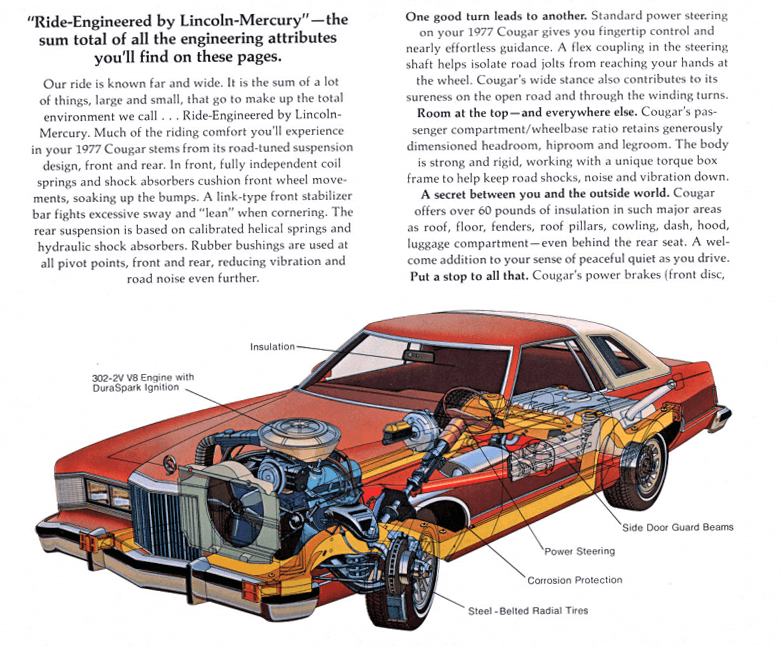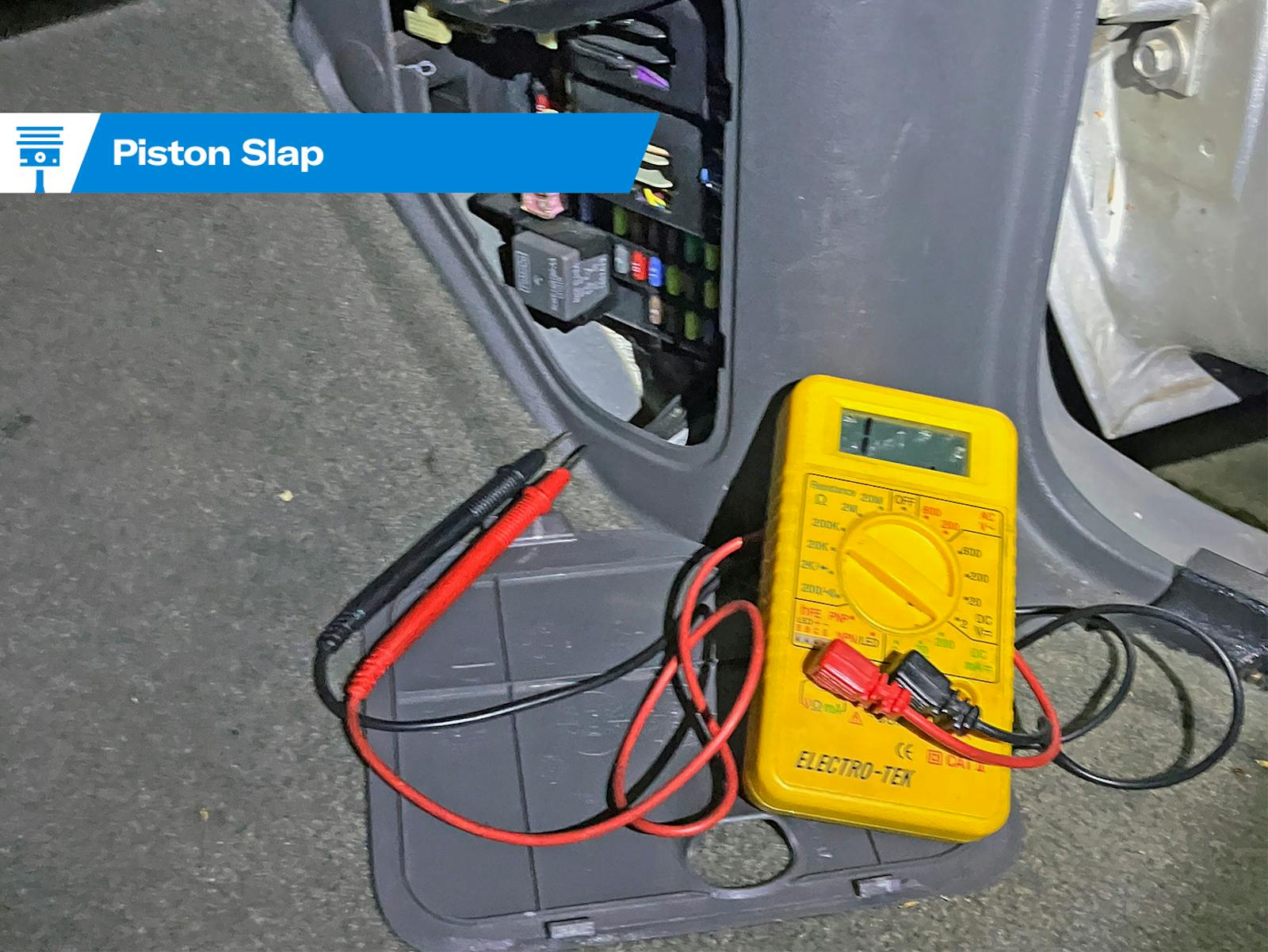Piston Slap: Ride-Engineered By Lincoln-Mercury?

Ty writes:
Hello! This is a great resource I wasn’t aware I had! My question is this: My ’78 Cougar came from factory with some kind of air ride system in the rear. At some point in my car’s lifetime, the previous owner made a budget-based decision to swap “Mustang coils” into the rear of the car, which removed the air system.
I’ve noticed that, on the 351 Windsor, there still appears to be an air pump which I would imagine powered that system. The pump is the sole attachment on the dedicated belt (car has three belts). I rebuilt the carb last year and the car still has a very distinct dip in power under heavy acceleration. I included an accelerator pump in the rebuild and even tossed another one in in case the first was faulty. I’m at my end with chasing this hesitation issue and I’m wondering if there is a heavy load being drawn from this air pump. Would I have anything to gain or lose by removing the belt from that pump? Or possibly removing the pump all together?
Should I keep the system in case I revert back to air-ride one day? Is that even an option?
Sajeev answers:
Let’s first address the last question: Air ride is not an option because your Cougar did not come from the factory with such a system. Nor did any non-Lincoln Ford product have it until the late 1990s, so odds are someone installed something like Gabriel HiJackers many moons ago. Which, ironically, is still available today, but I digress.

Instead, your Cougar came with Ride-Engineering by Lincoln-Mercury, because Ford owners are just plain crude. No matter, this was the luxurious equivalent of Pontiac’s marketing efforts to promote a Radial Tuned Suspension. I’d suggest there’s nothing special about a softly sprung suspension with utterly-conventional oil-filled shocks and a front sway bar, but don’t listen to this know-nothing-know-it-all … read about Ride Engineering from the Cougar’s brochure.

Which leads me to your other questions, as the aftermarket air shocks were never inflated by a belt-driven pump on the engine. That part you’re seeing is likely the smog pump, which feeds fresh air into the cylinder head’s exhaust ports to improve the catalytic converter’s efficiency. The assertion that a smog pump can hamper acceleration in the manner described is very unlikely, unless the pump’s bearings are squeaking or screaming bloody murder, that is.
Enough rambling already, Sanjeev, what’s the short answer? I bet your fuel pump (under $20) is failing under high loads, because if the carburetor is truly set up right (proper jets, tuned accelerator pump, aftermarket carb of the right size installed, etc.) you likely have a fuel pressure problem. I would pop in a fuel pressure gauge—a long one, so it can be seen with the hood closed—and read it while running wide-open throttle in second gear. If the pressure is up to specifications, it’s possible that the EGR (exhaust gas recirculation) system is also to blame. The EGR valve can be tested for functionality, and inspected for bad vacuum lines. Considering new EGR valves are under $50, maybe just inspect and replace it if anything looks wrong.
OK, here’s the really short answer: I bet it’s time for a new fuel pump.
Bonus! A Piston Slap Nugget of Wisdom.
You can remove the smog pump with no adverse effects, but as a fan of Malaise Era engineering (i.e. do the best with the limited funding/technology available) I think it’s neither helpful nor in the spirit of owning a machine as fine as the 1977–79 Mercury Cougar. And do not expect it to improve performance: the low-compression small-block V-8, low-flow cylinder heads, rev-hating camshaft, and tiny exhaust system ensure that will never, ever happen.
Have a question you’d like answered on Piston Slap? Send your queries to pistonslap@hagerty.com, and give us as much detail as possible so we can help! If you need an expedited resolution, make a post on the Hagerty Community!

